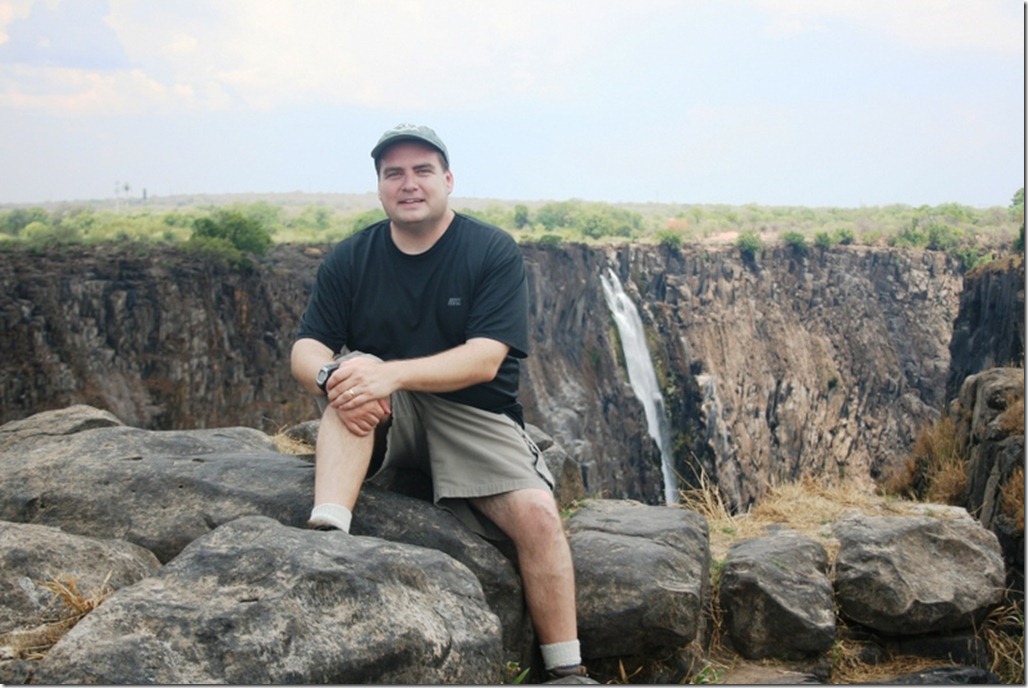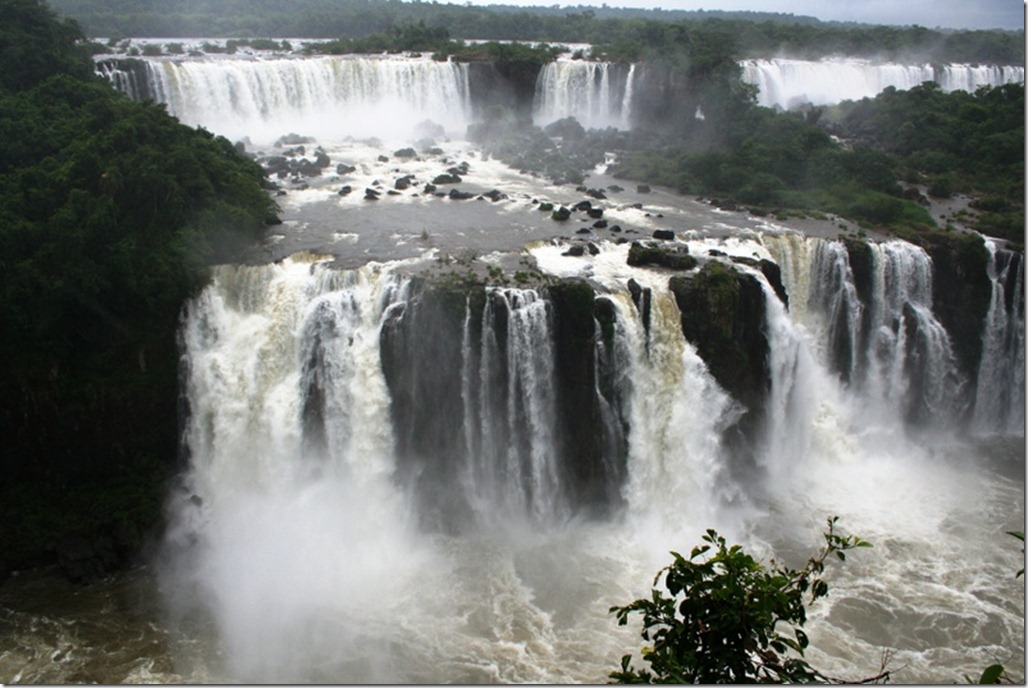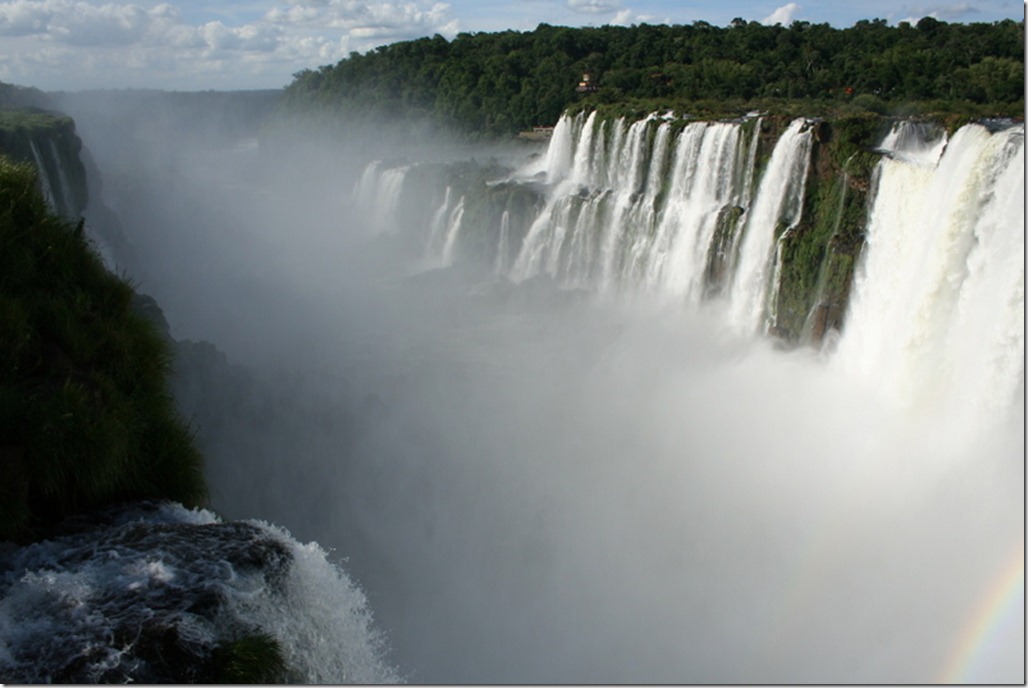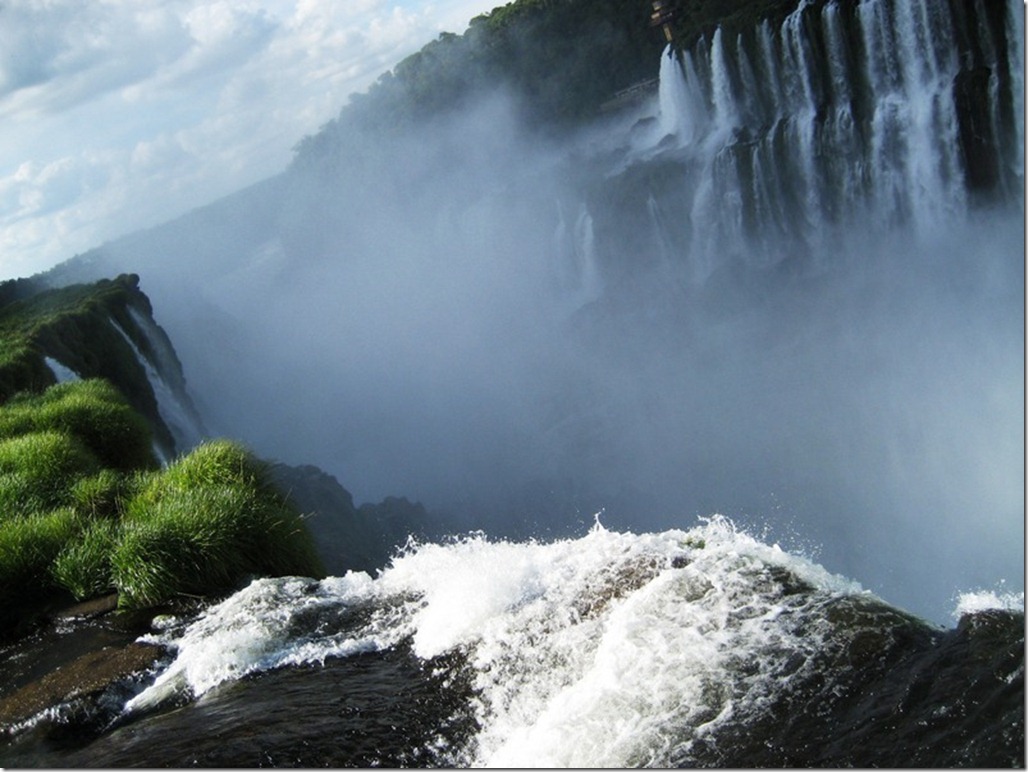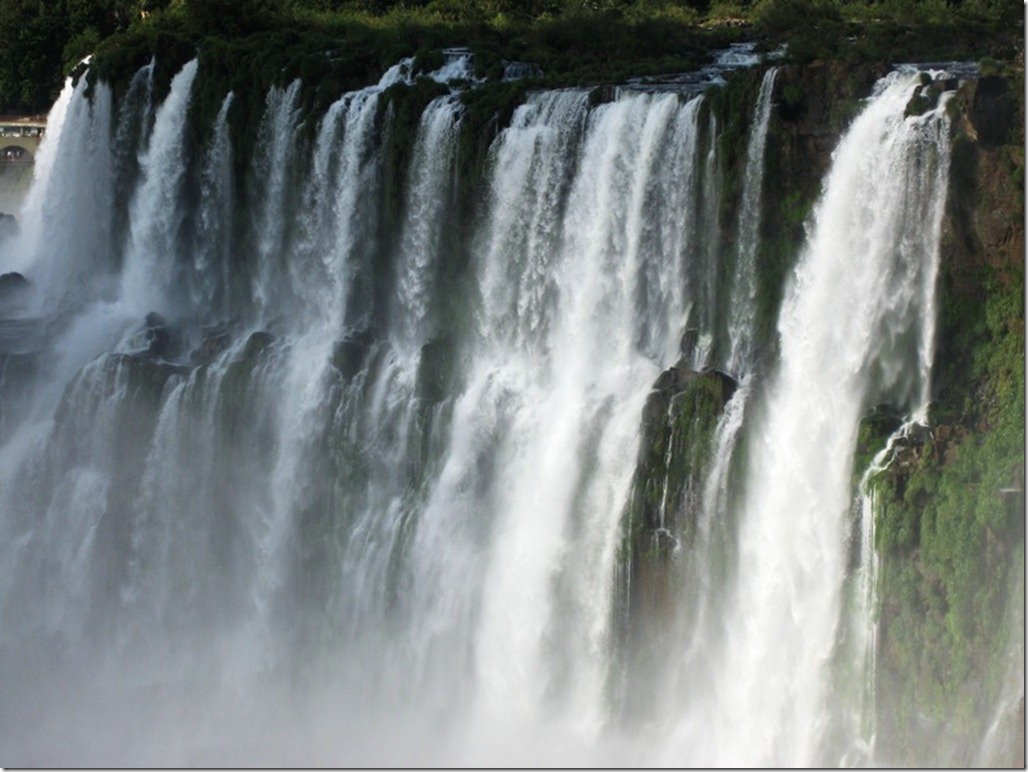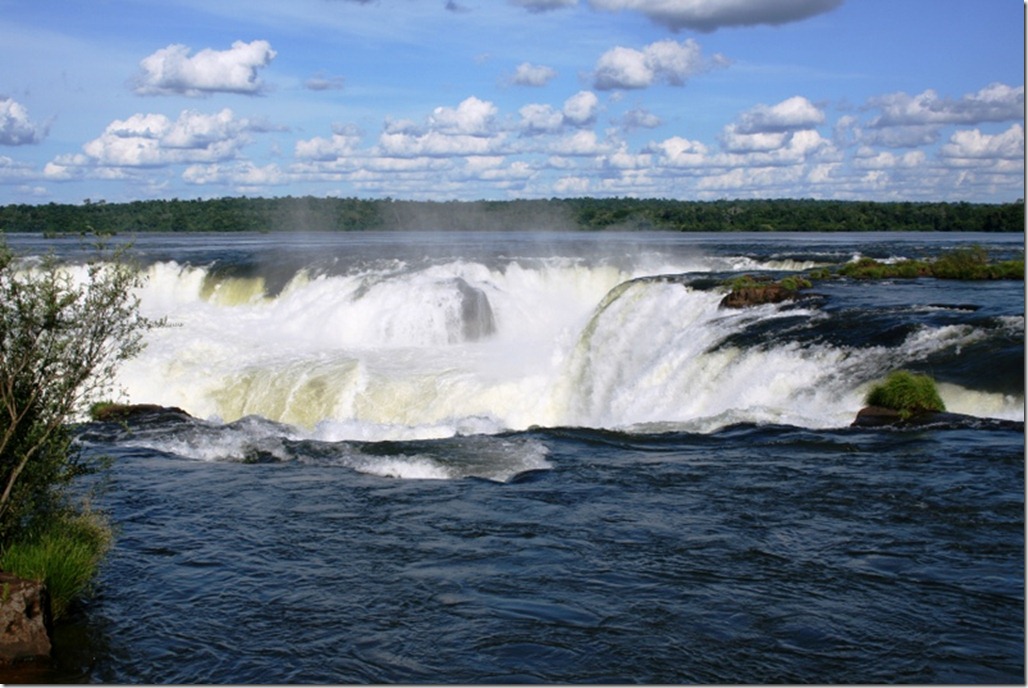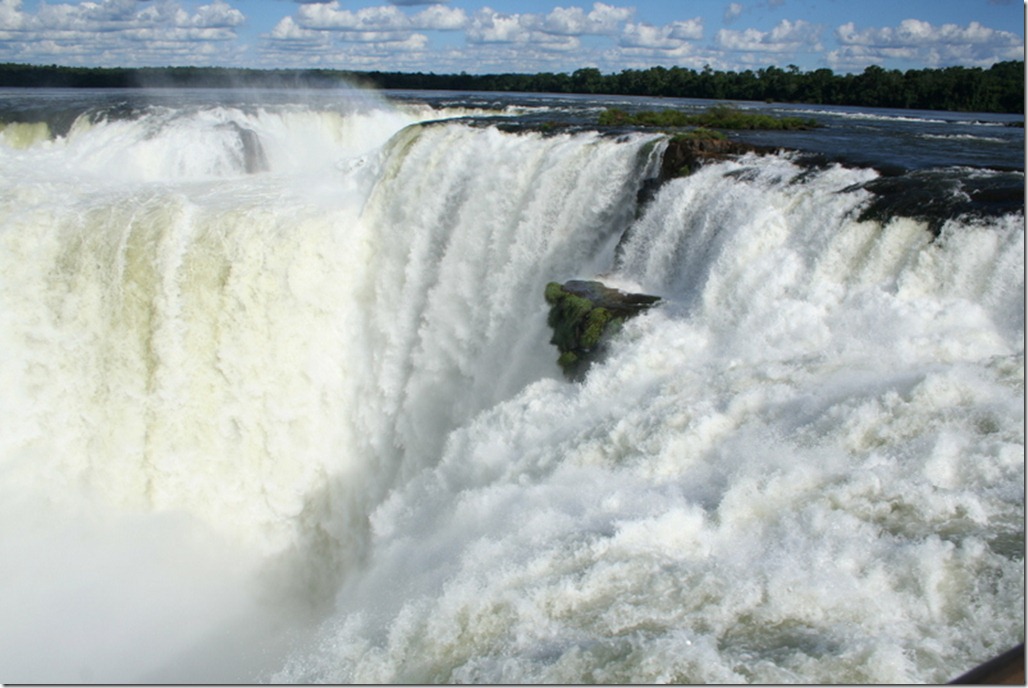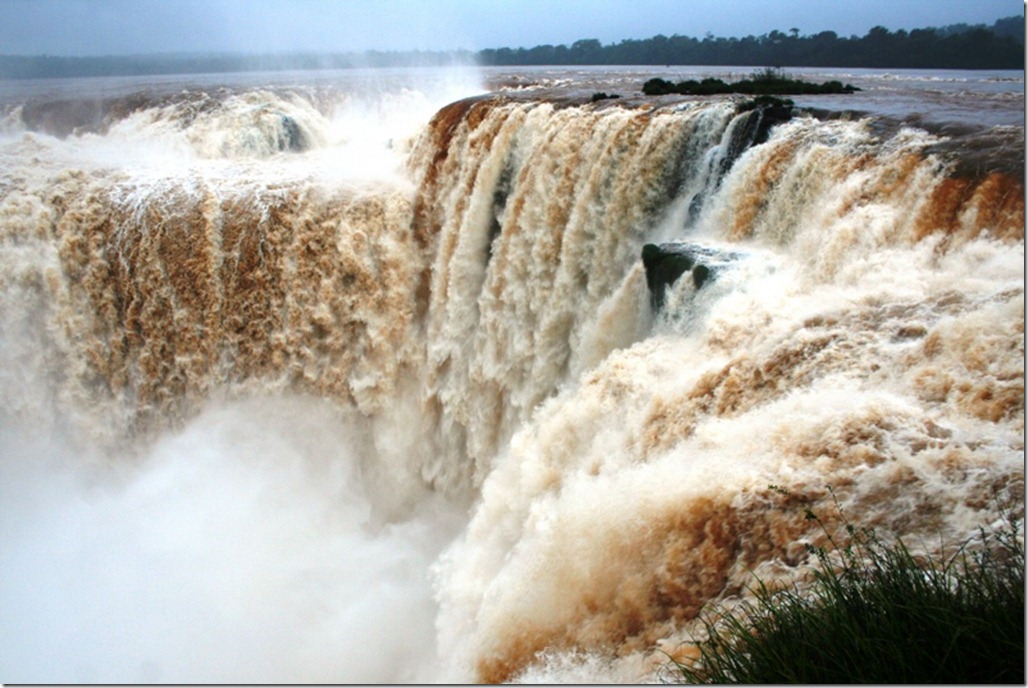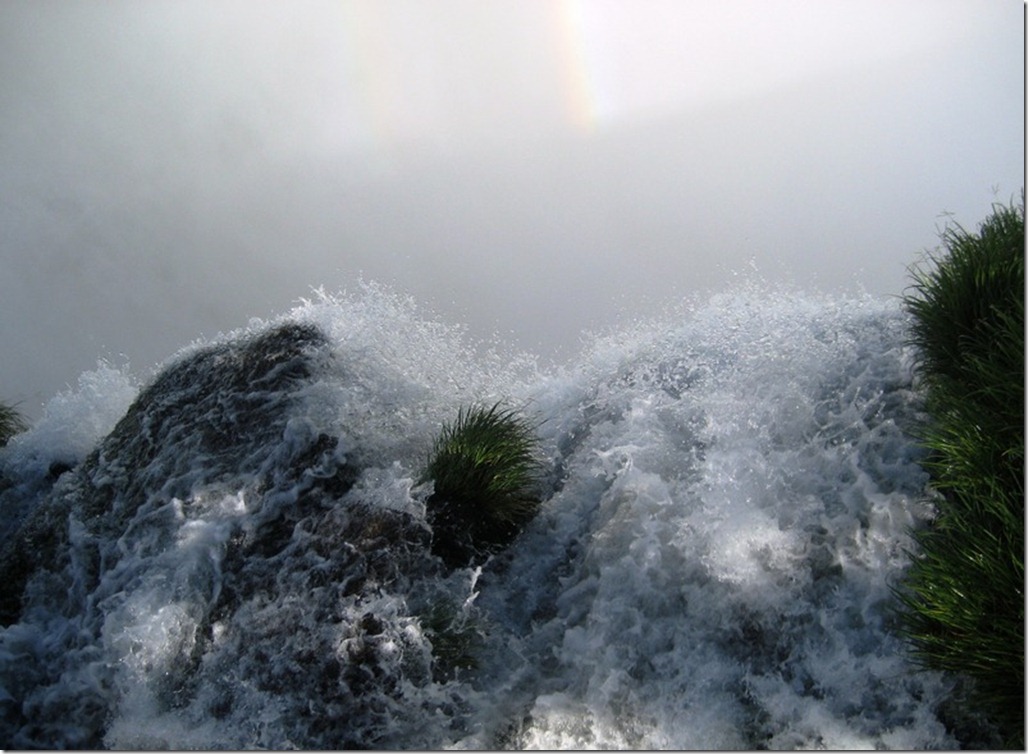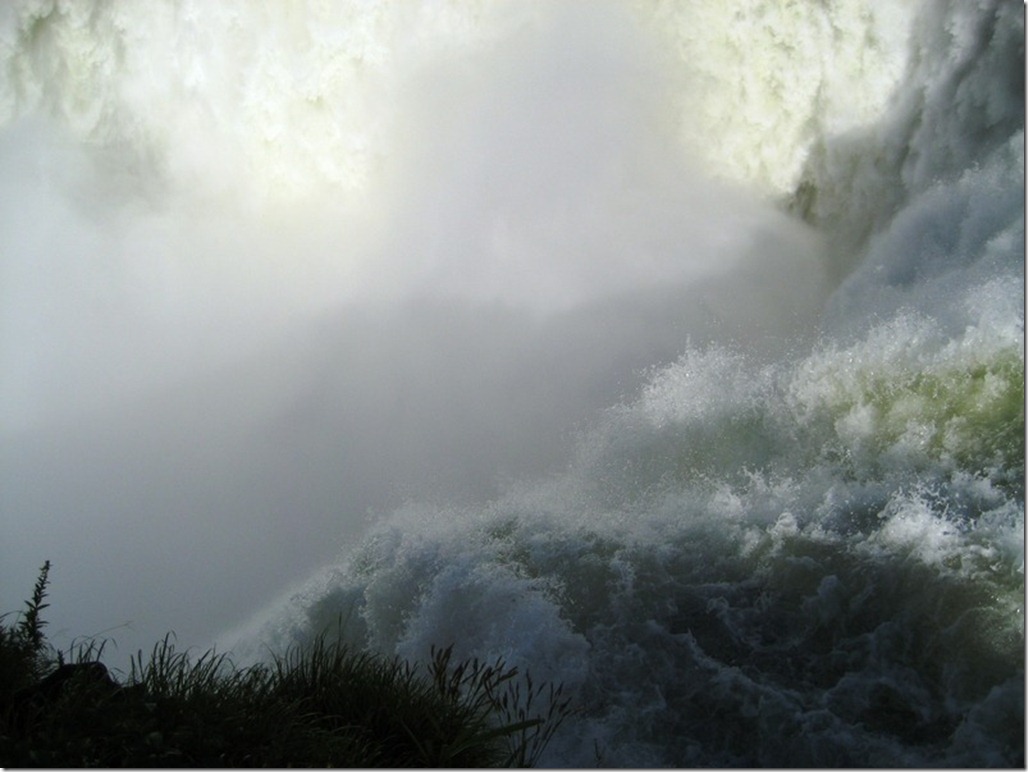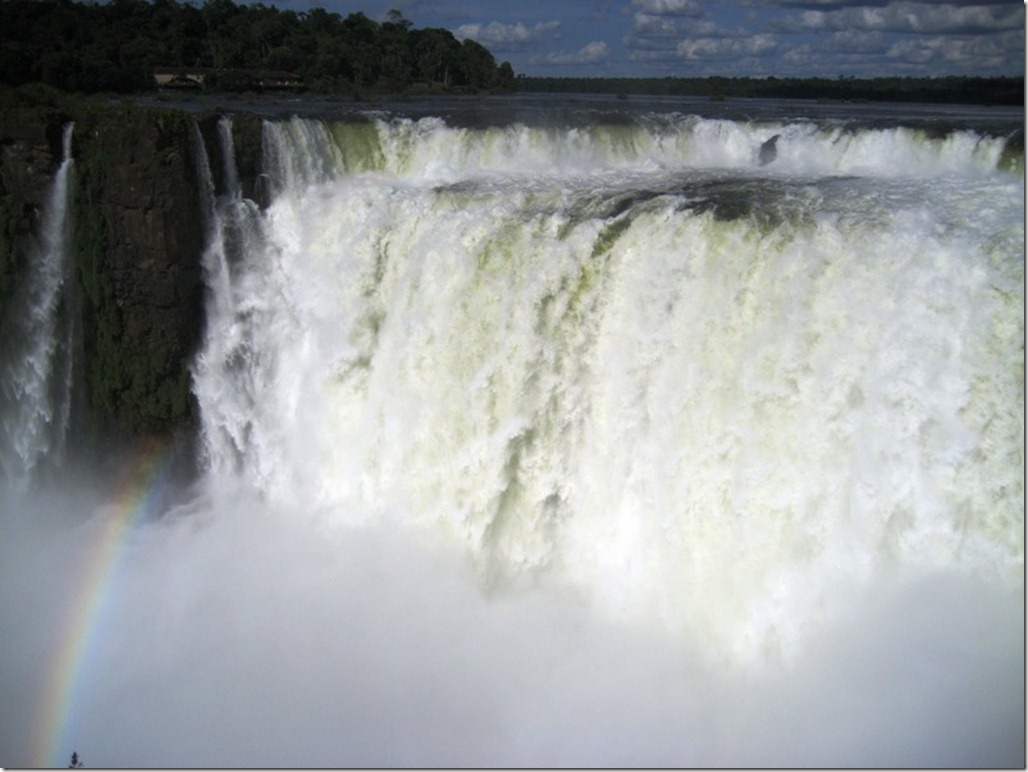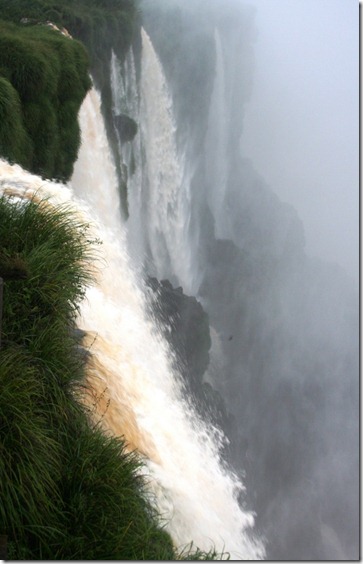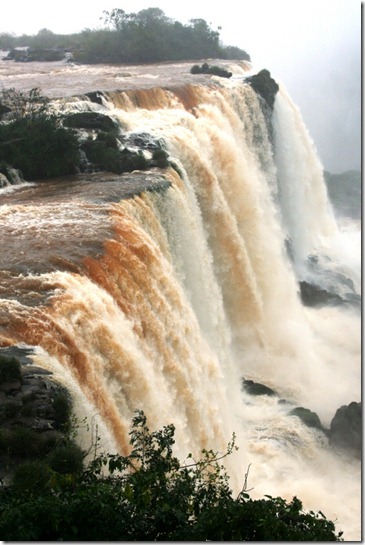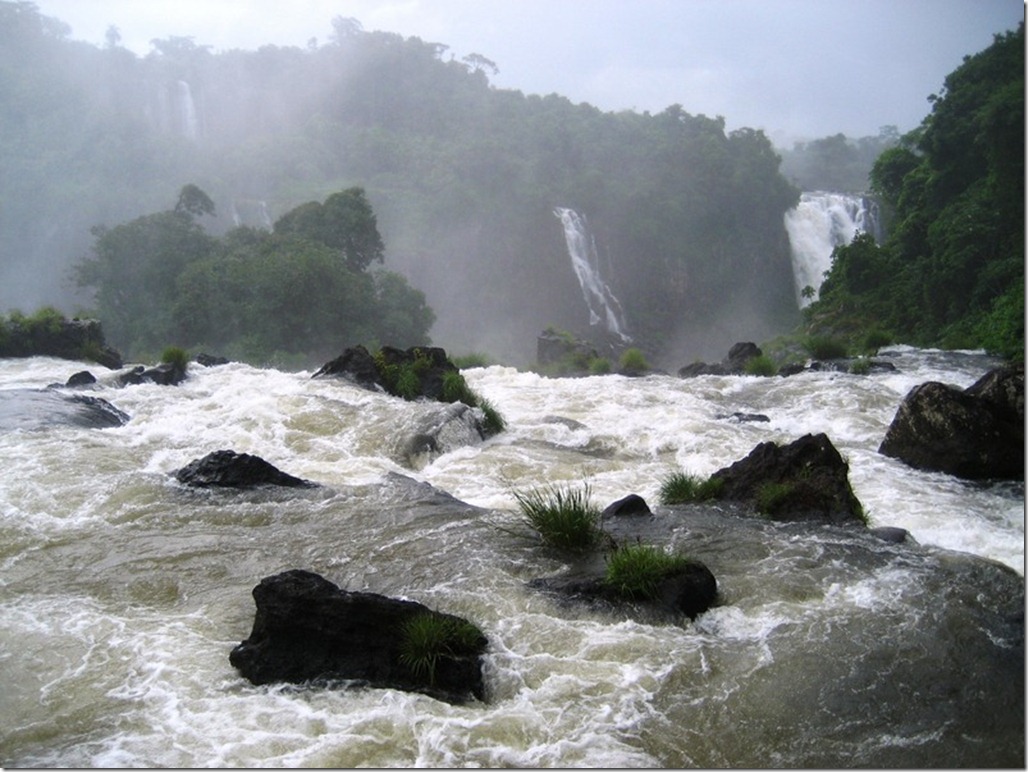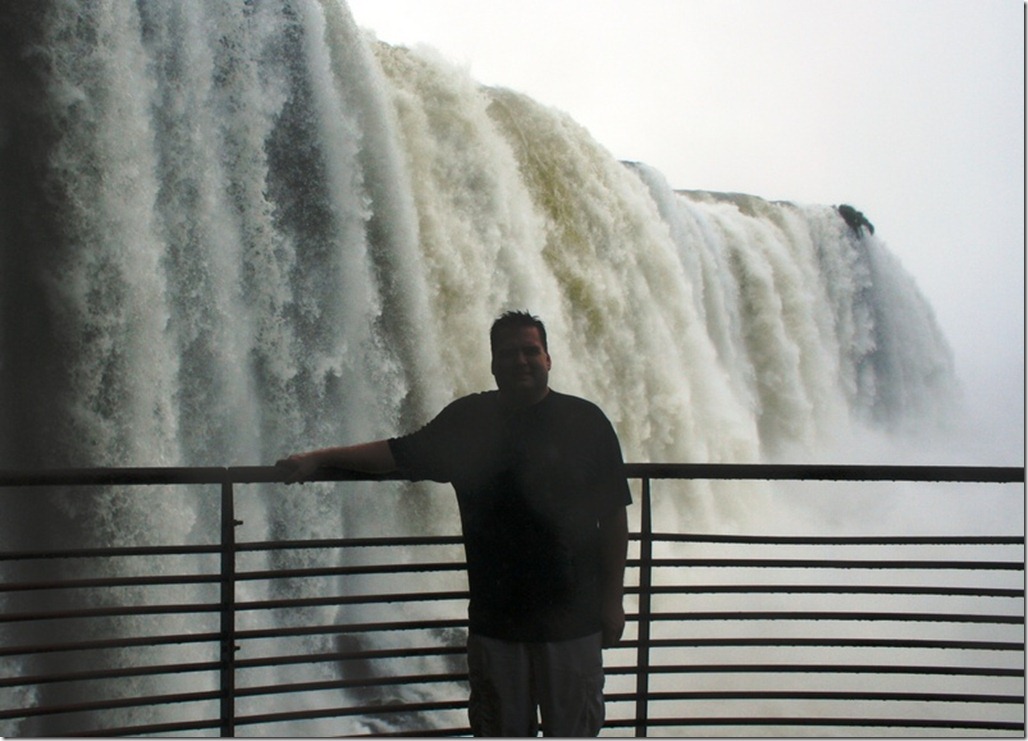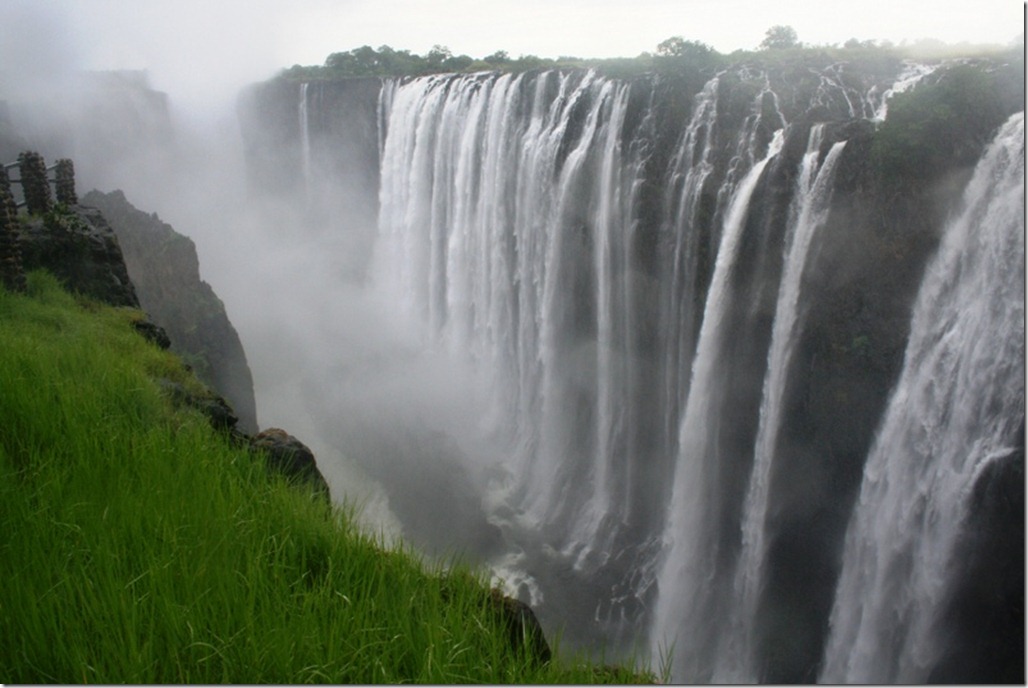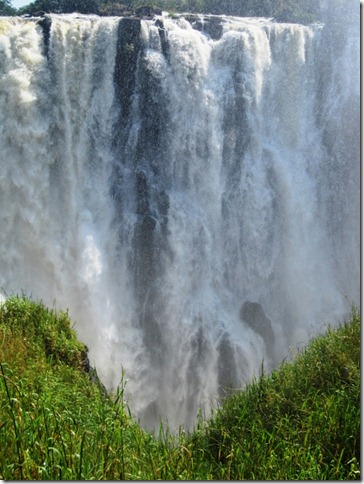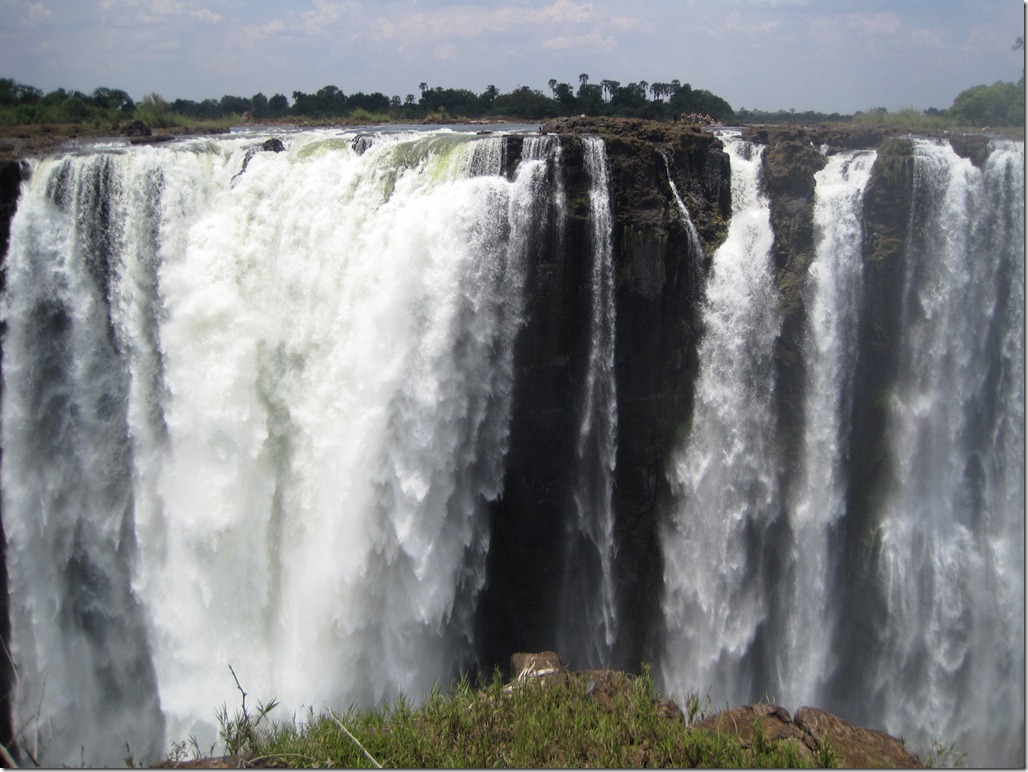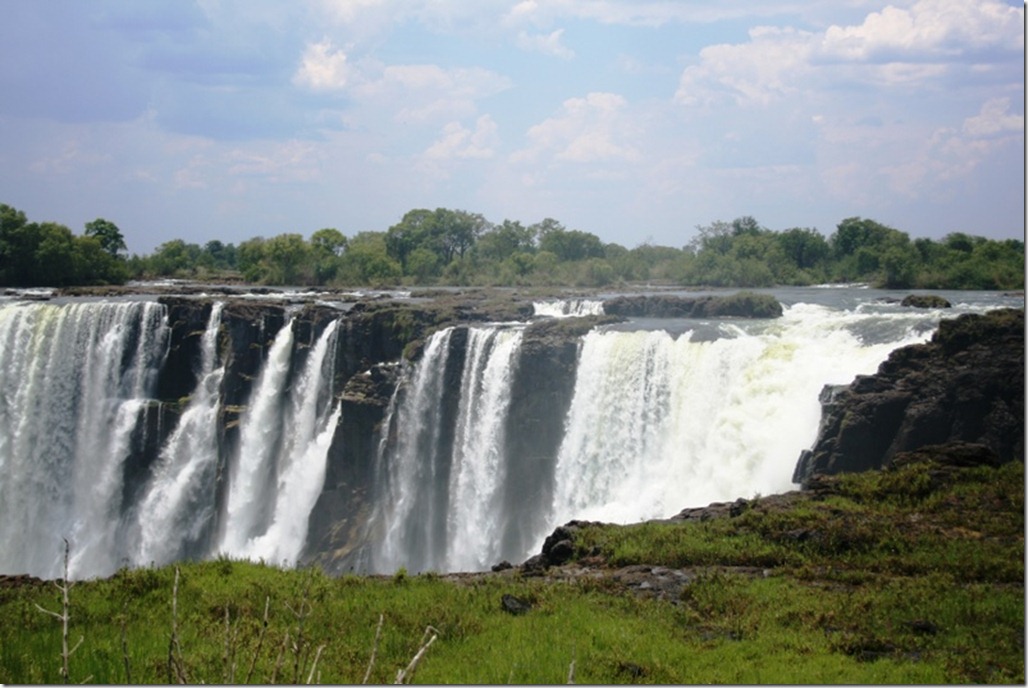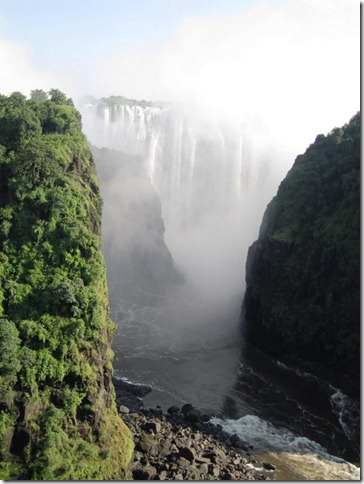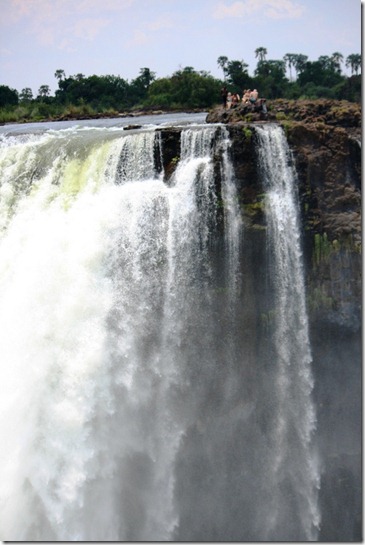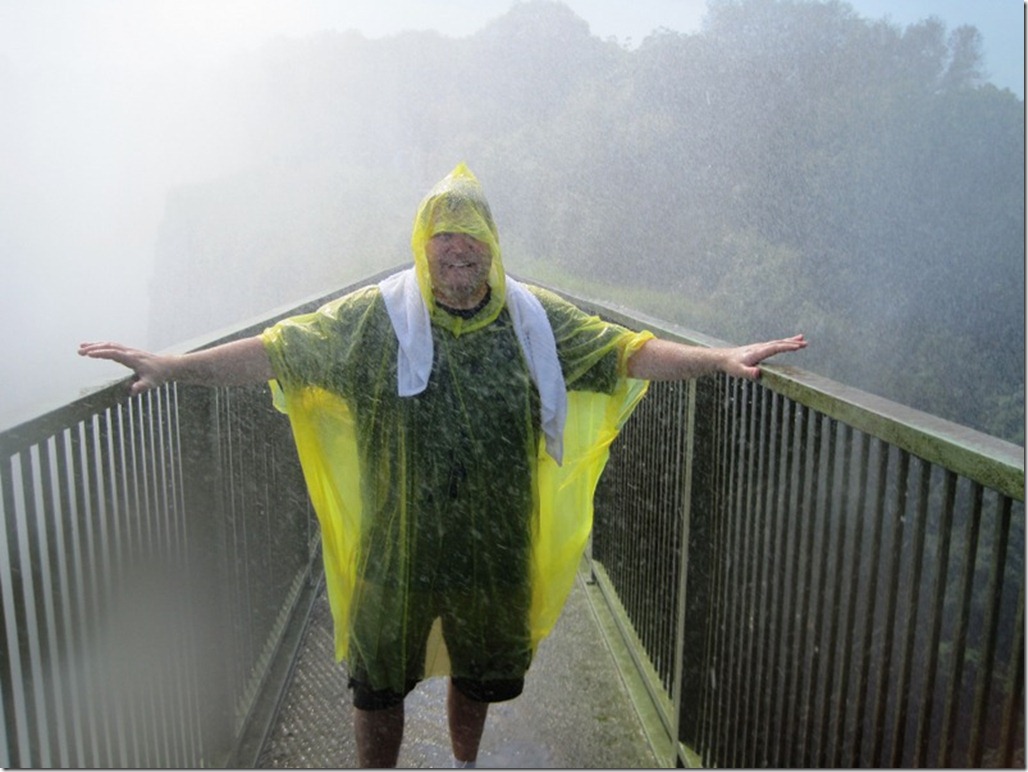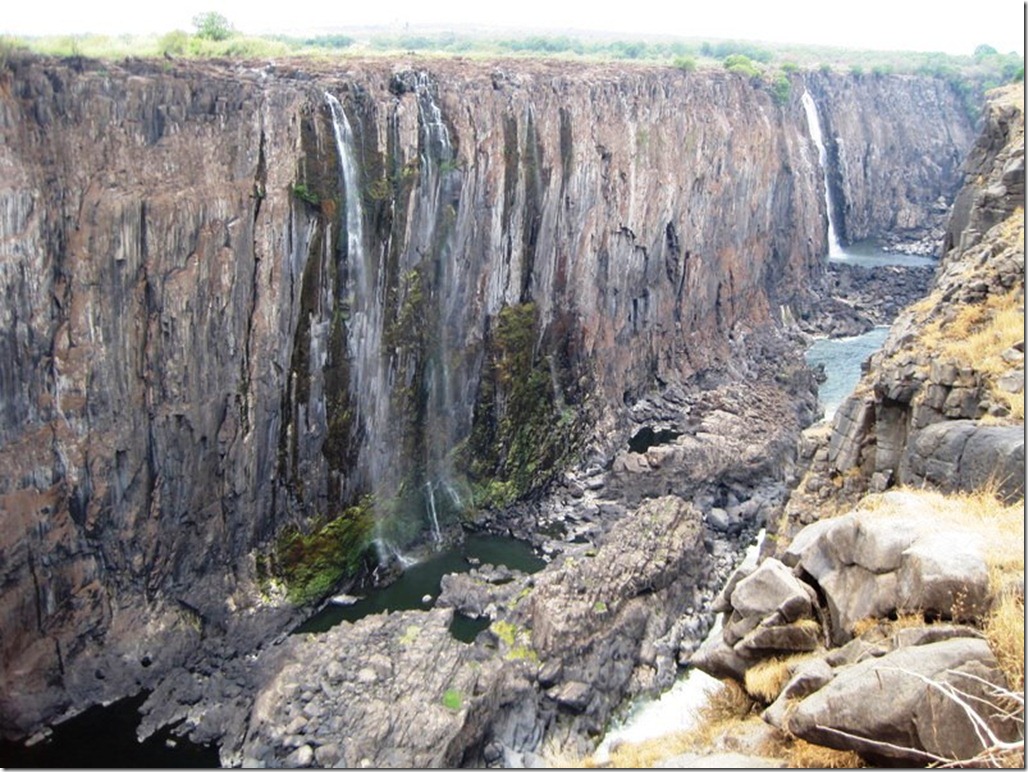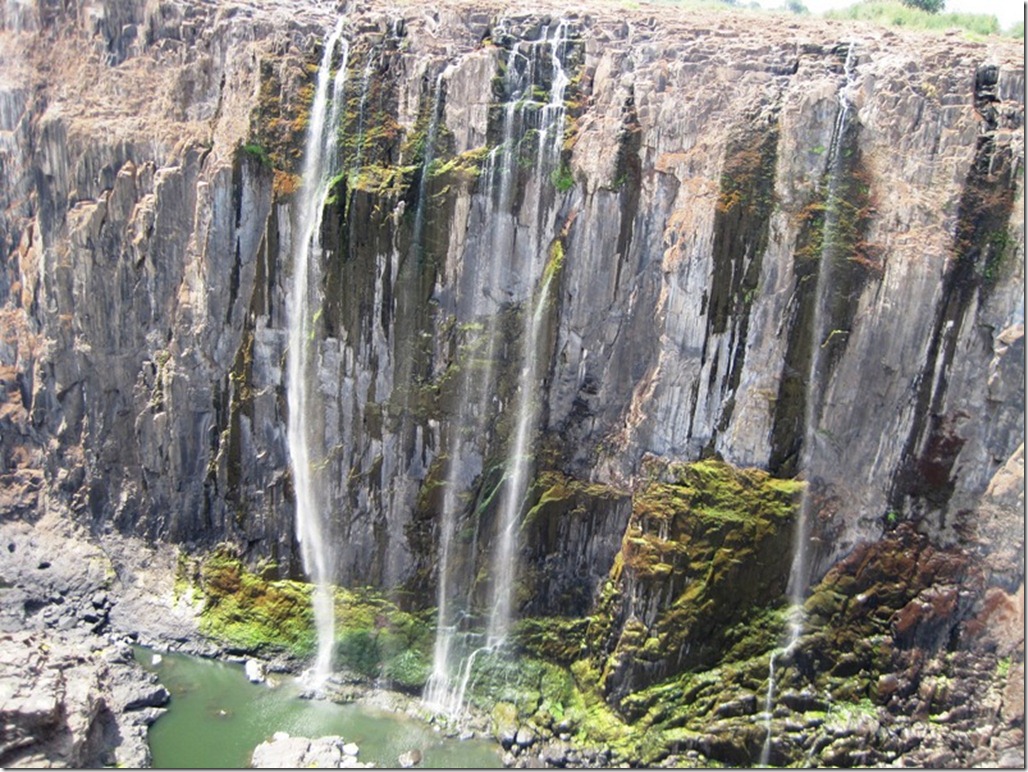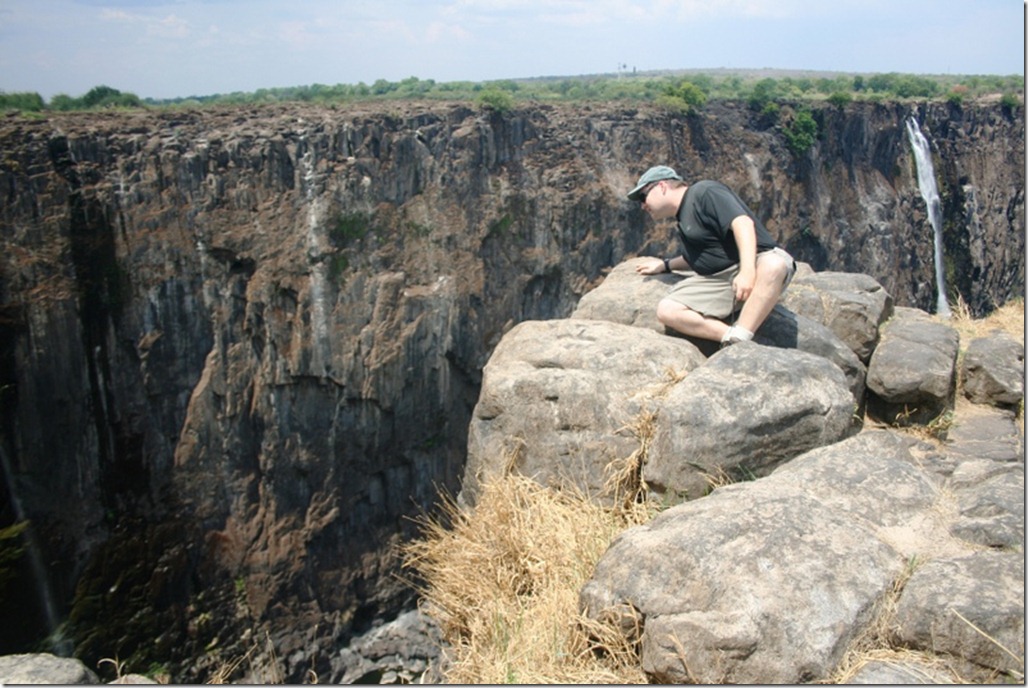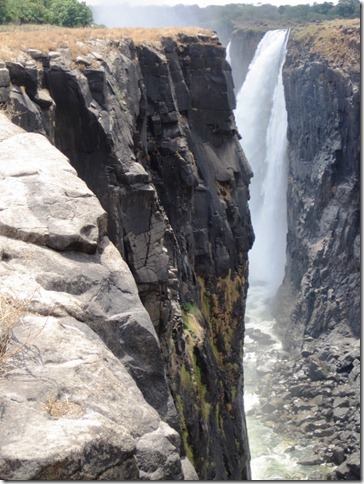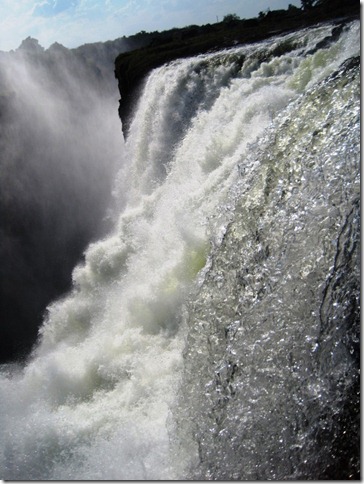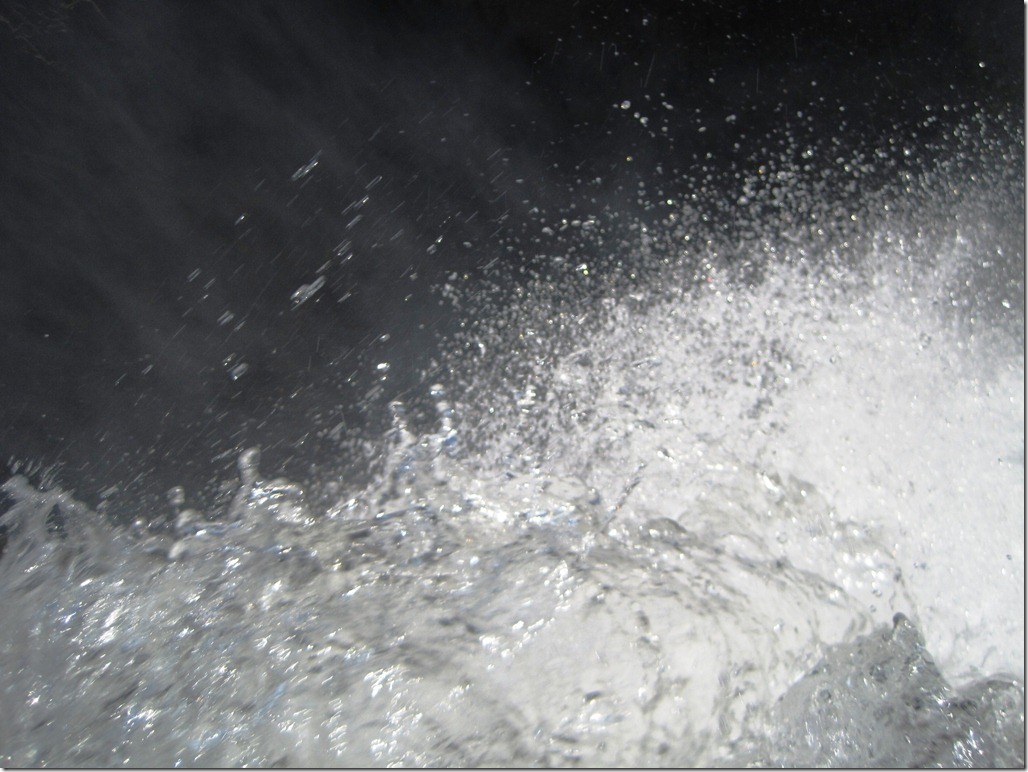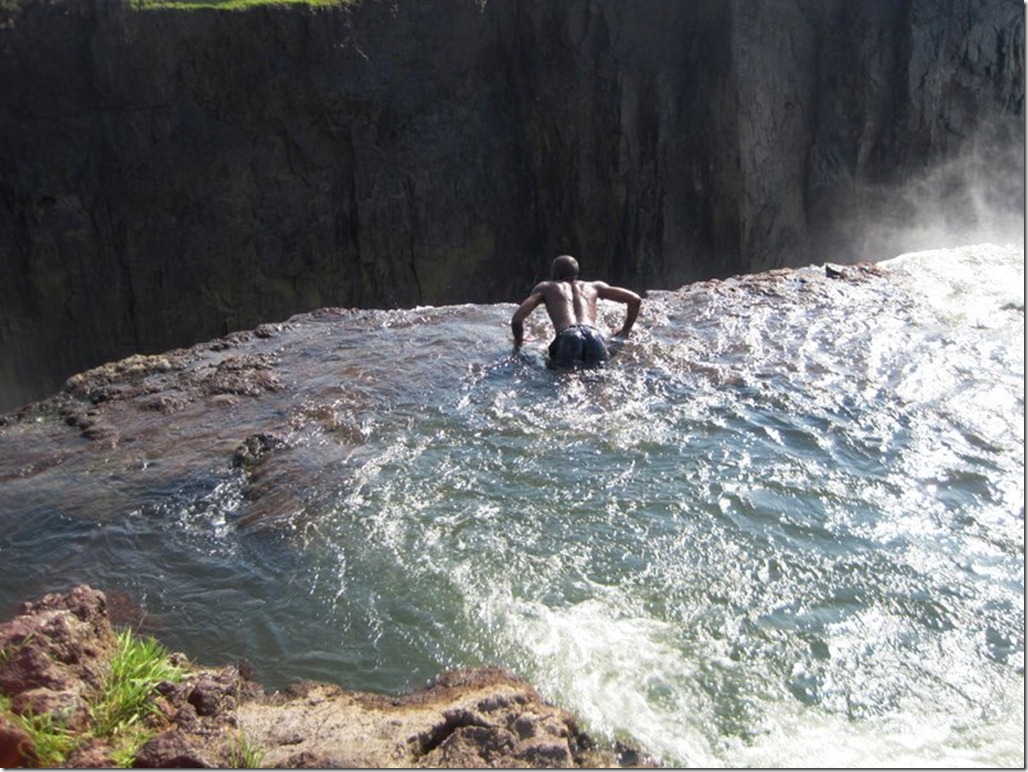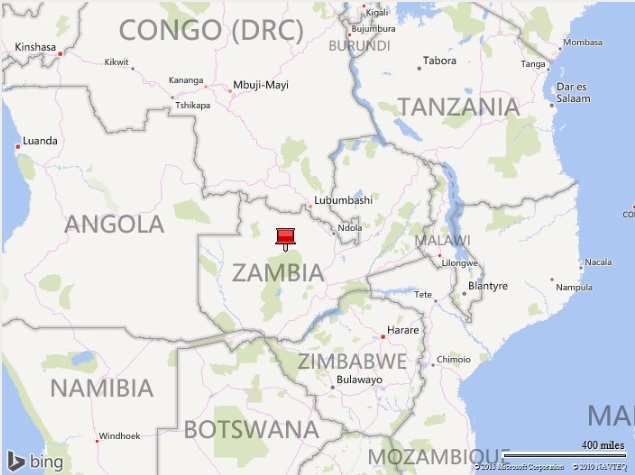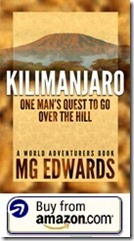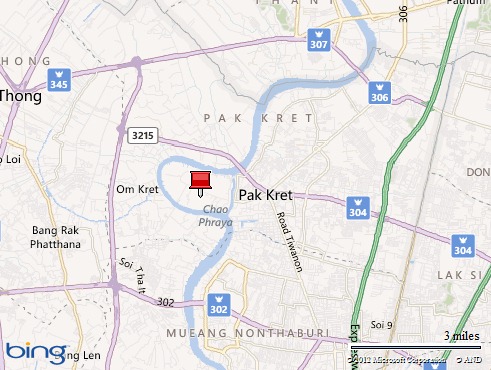In September 2011, my family and I visited Ko Kret (Koh Kred) Island in the Chao Phraya River north of Bangkok, Thailand. Our outing then was cut short when we were stopped by the rising floodwaters that inundated the river. You can read about that adventure here.
Six months later after a long dry spell, we decided to try visiting again, this time on bicycle. A two meter decrease in the water level since late last year made the island much more accessible. Here are some photos showing the flooding six months ago and after the waters receded:
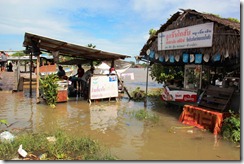
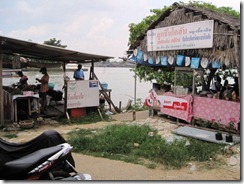
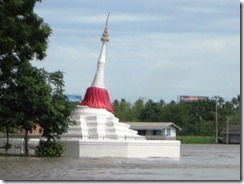
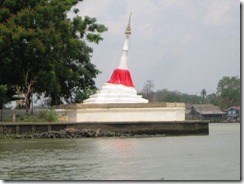
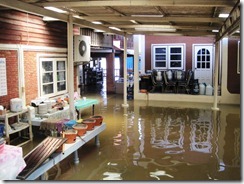
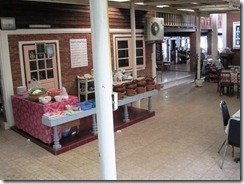
My wife, son and I hauled our bicycles to the ferry dock at Wat Sanamnau Buddhist temple across from the island and carried them over. Along the way, we ran into places we had seen six months earlier that had been flooded during that visit. This time, they were dry.
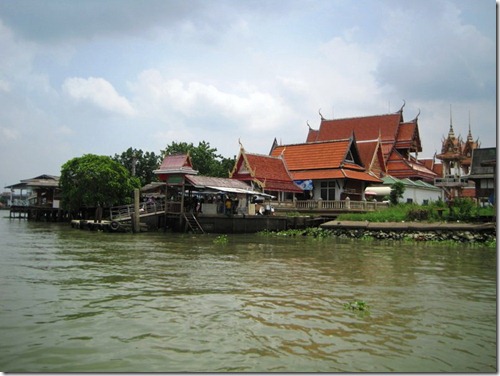
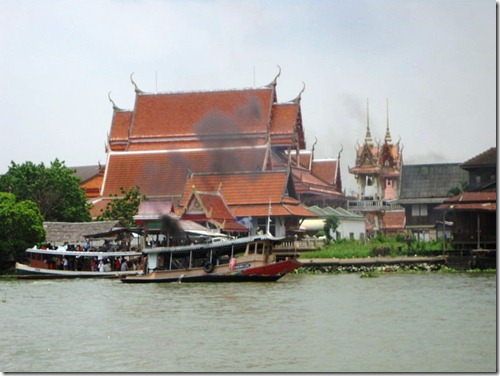
The ferry ride on the rickety wooden boat overloaded with passengers was an adventure in and of itself, especially with bicycles in tow. The passengers rushed on and off the ferry and fought for space, making it a logistical challenge to negotiate passage.
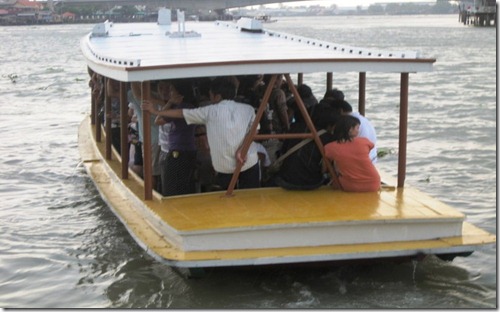
We made it across the river safely and stopped for lunch at a roadside food stand that offered Thai cuisine. I ate Pad Thai, the national dish of Thailand — always a “safe” dish to order if you don’t recognize any other dishes on dingy laminated menus with faded photos and Thai descriptions. My son ate crab fried rice, and my wife a seafood soup that looked a bit iffy to me but that she claimed tasted good.
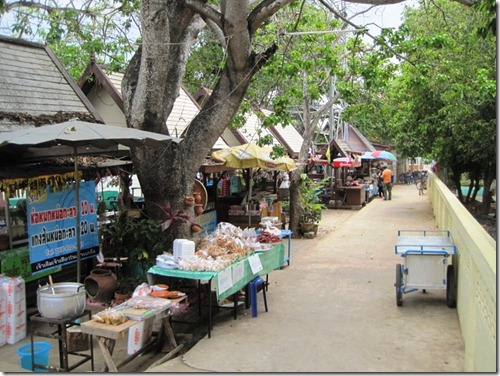
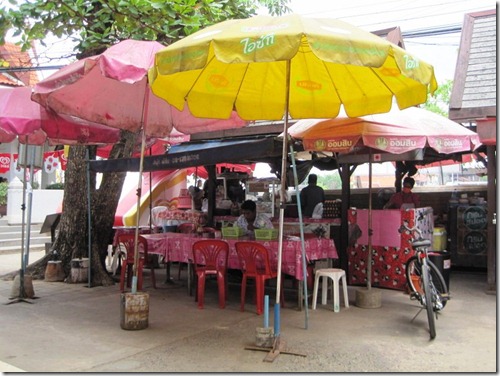
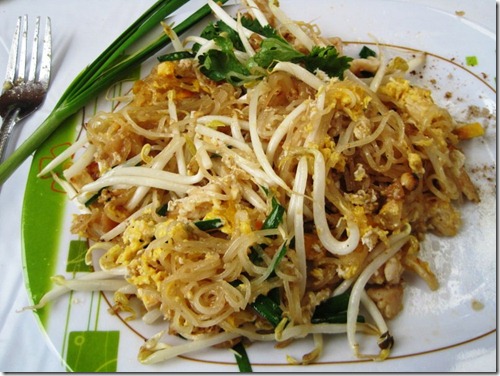
We left the market located next to the ferry dock and set off on a five-kilometer (2.5 mile) bicycle ride around the island. We first headed toward the “Koh Kred Pottery Village.” What we thought was another pottery market was in fact a functioning township home to pottery makers and several large brick kilns where local artisans baked ceramic pottery.
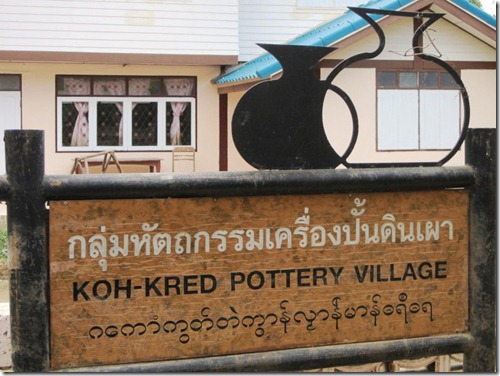
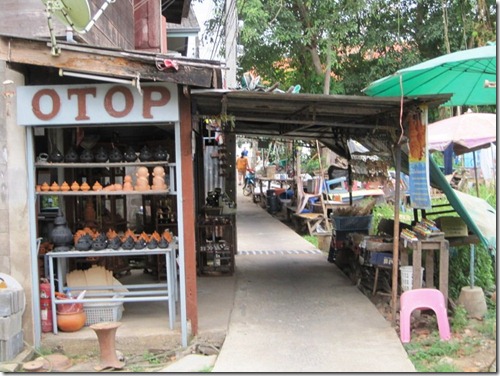
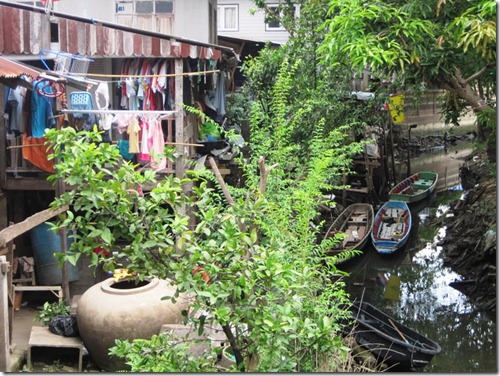
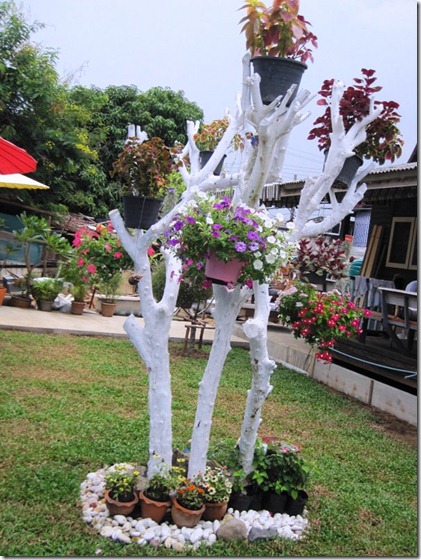
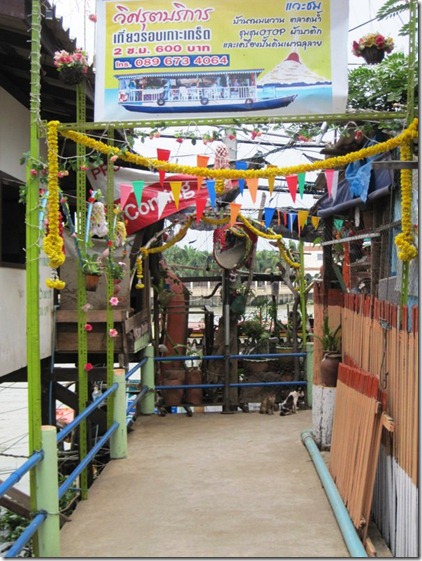
We rode past some Buddhist landmarks, including Wat Chimphi temple, where I spotted one of the few golden phoenix statues I’d seen in Thailand, as well as shrines dedicated to the elephant god Ganesha and other Buddhist deities.
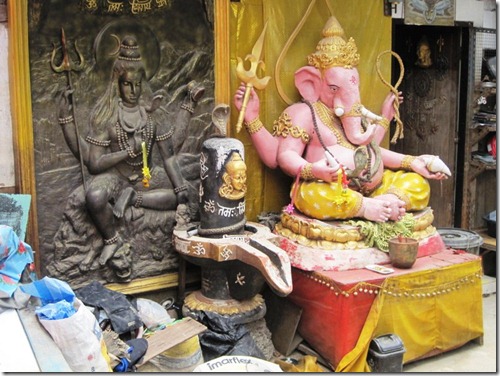
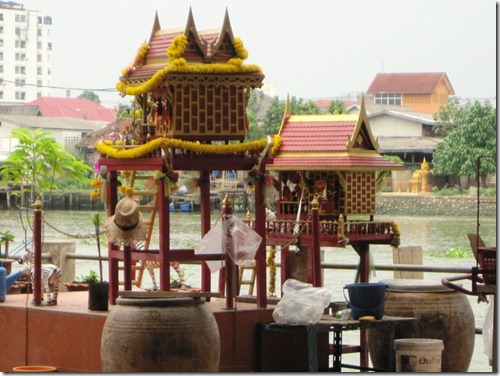
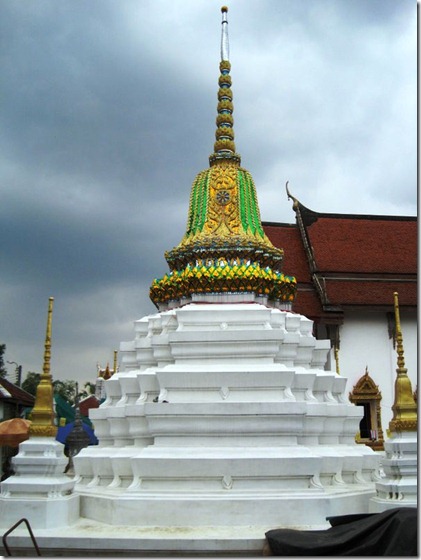
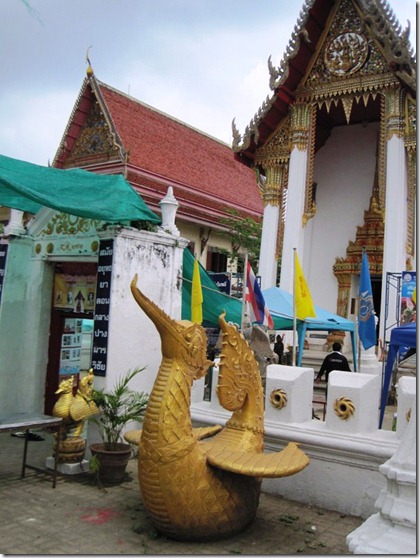
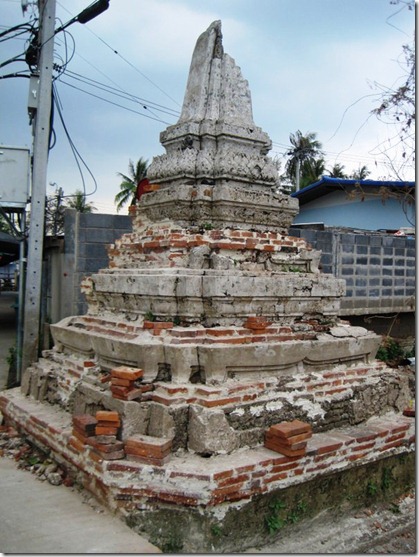
Small canals and homes elevated on stilts added to the flavor of the island.
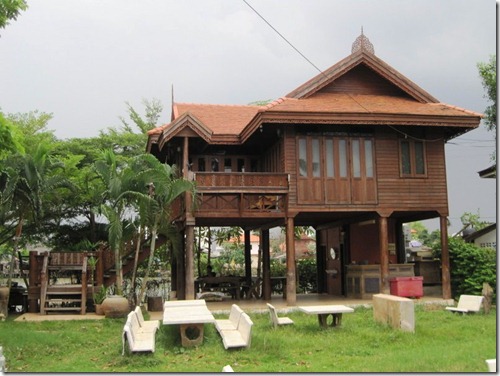
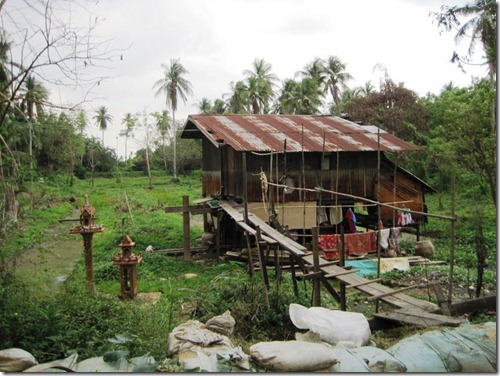
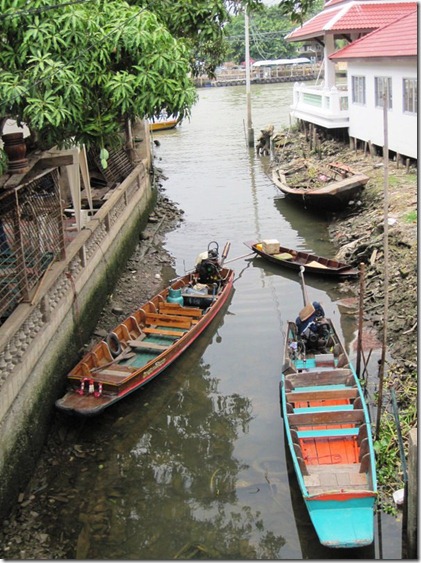
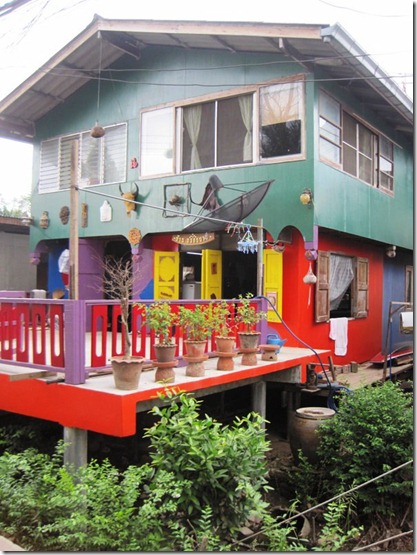
We turned inland and rode on raised concrete thoroughfares that passed above canals and swamps dotting the island. Although the passageways were generally flat, we ran into a number of dips, speed bumps and dogs that could have sent us tumbling into the murky water and marshes on either side. In spite of the risk, the scenery made for some beautiful photo opportunities.
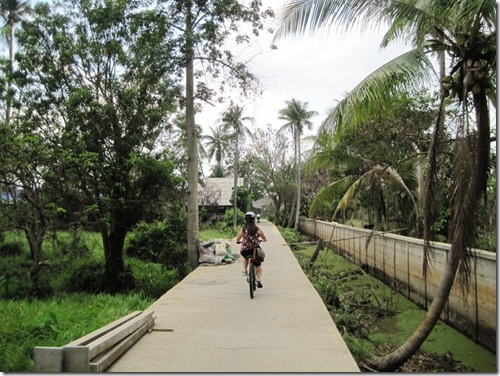
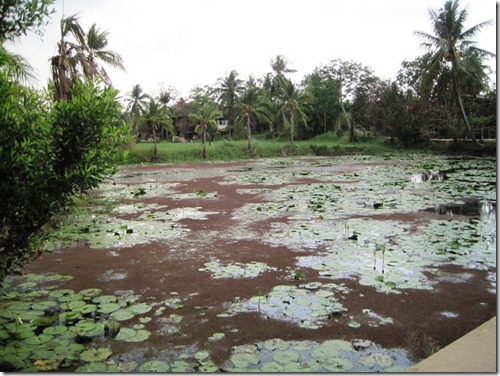
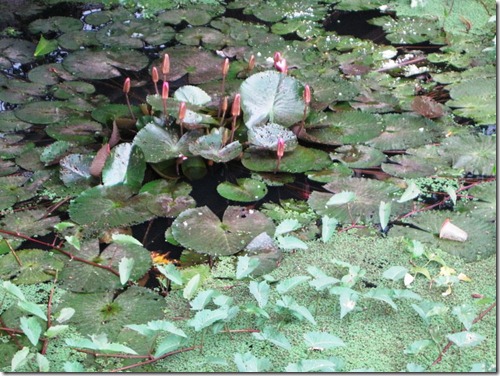
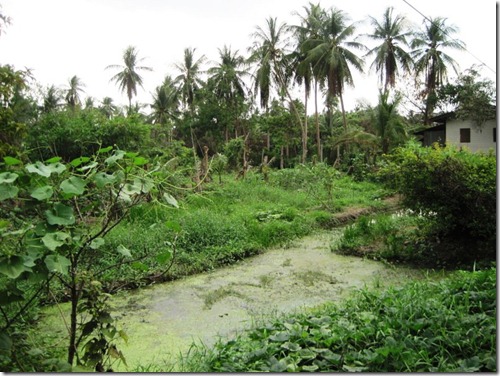
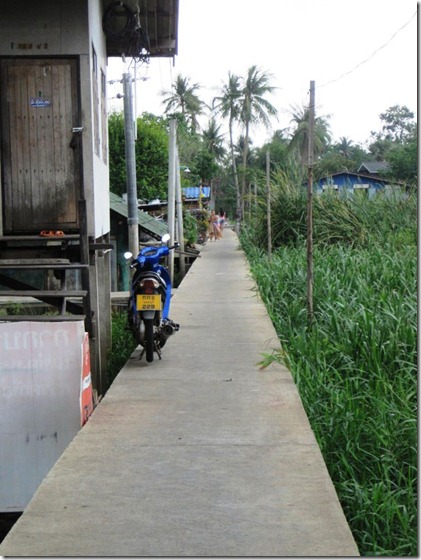
My wife, son and I rode through countryside filled with homes on stilts, soggy fields growing whatever the locals could cultivate, Buddhist temples, and the occasional store lining the road. The buildings were in varying stages of decay or disrepair. The hot, wet weather and repeated flooding took a heavier toll on structures here than it would have in other climes.
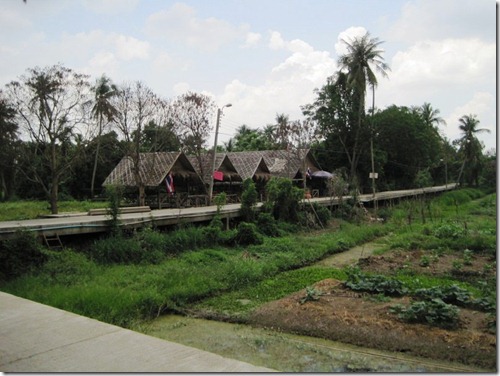
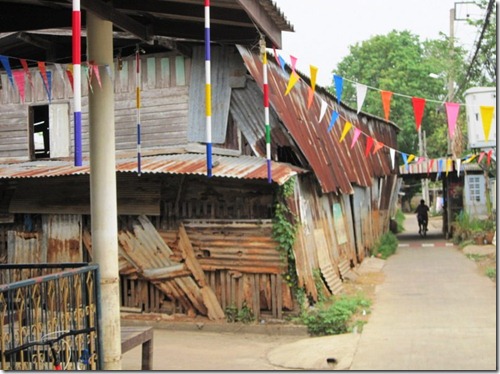
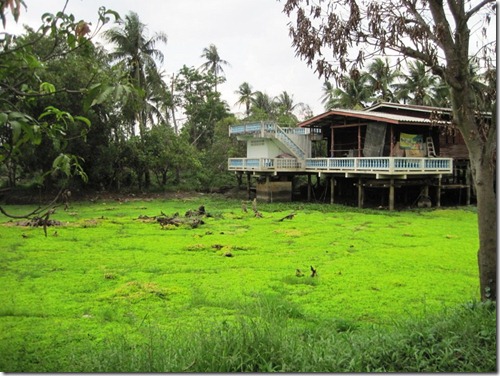
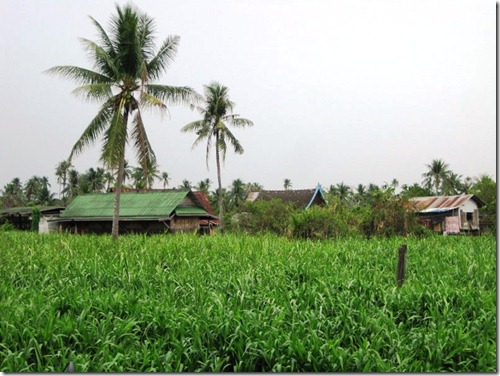
Turning once more, we rode back to the central market on Ko Kret. We stopped for coconut ice cream moments before a rainstorm passed over and dumped buckets of precipitation, a common but unpredictable occurrence during the rainy season. The coconut ice cream — a local concoction topped with fruit jelly, condensed milk, and sticky rice — was a real treat. Vendors who waited beside us for the rain to stop shared laughs with us without exchanging a word. We couldn’t speak Thai, and they couldn’t speak English, but the auspiciousness of eating dessert while waiting out a rainstorm transcended our language barrier.
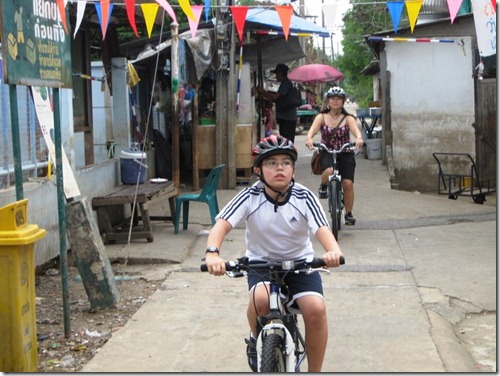
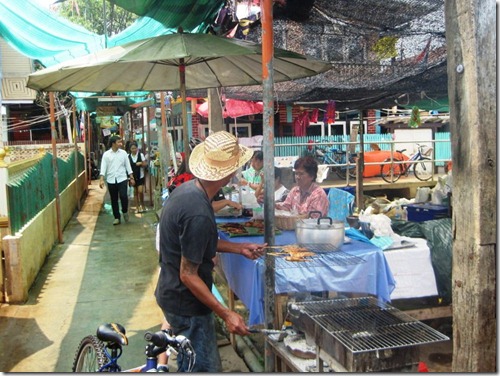
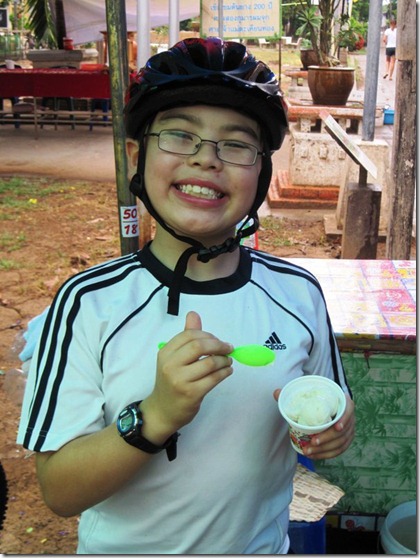
After the storm, the vendors swept away the water with brooms, and we inched our way through the narrow, crowded alleyway with our bicycles. I joked to my wife that we got wet every time we visited Ko Kret. Getting doused by rain was a sight better than succumbing to a flood.
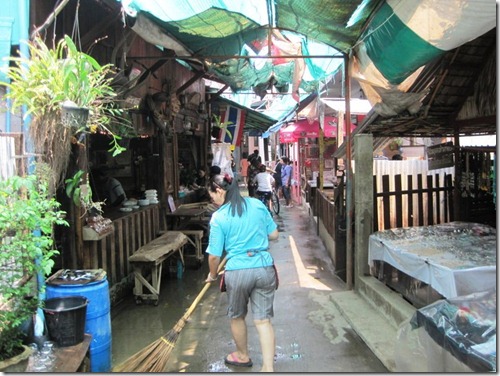
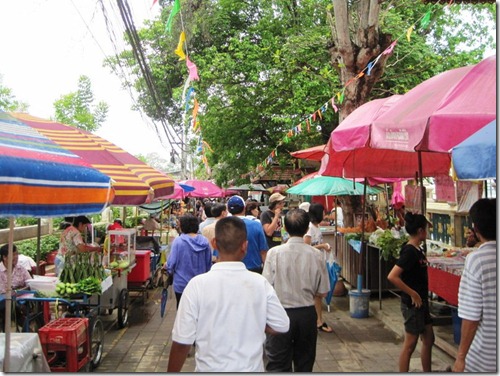
The rain started again as we left Ko Kret Island, and we darted back to our car with bicycles in tow. Although we ended up soaking wet, we enjoyed a great day riding on an island that’s not far from Bangkok — but a world away.
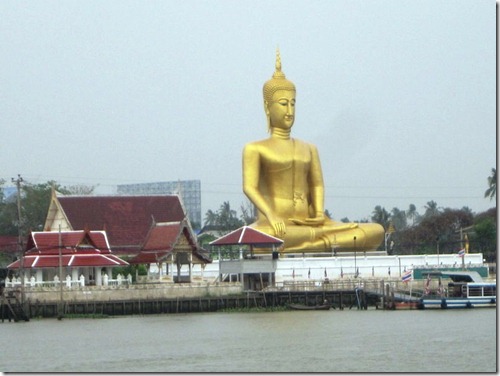
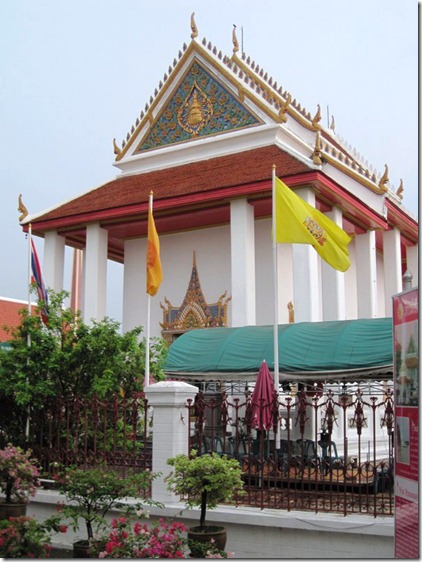
To read about our previous visit to Ko Kret during the Bangkok flood, click here for part one and here for part two.
![buythumb[3] buythumb[3]](https://www.mgedwards.com/wp-content/uploads/2012/04/buythumb31.jpg) M.G. Edwards is a writer of books and stories in the mystery, thriller and science fiction-fantasy genres. He also writes travel adventures. He is author of Kilimanjaro: One Man’s Quest to Go Over the Hill, a non-fiction account of his attempt to summit Mount Kilimanjaro, Africa’s highest mountain. His collection of short stories called Real Dreams: Thirty Years of Short Stories available as an e-book and in print on Amazon.com. He lives in Bangkok, Thailand with his wife Jing and son Alex.
M.G. Edwards is a writer of books and stories in the mystery, thriller and science fiction-fantasy genres. He also writes travel adventures. He is author of Kilimanjaro: One Man’s Quest to Go Over the Hill, a non-fiction account of his attempt to summit Mount Kilimanjaro, Africa’s highest mountain. His collection of short stories called Real Dreams: Thirty Years of Short Stories available as an e-book and in print on Amazon.com. He lives in Bangkok, Thailand with his wife Jing and son Alex.
For more books or stories by M.G. Edwards, visit his web site at www.mgedwards.com or his blog, World Adventurers. Contact him at me@mgedwards.com, on Facebook, on Google+, or @m_g_edwards on Twitter.
© 2012 Brilliance Press. All rights reserved. No part of this work may be reproduced or transmitted without the written consent of the author.


